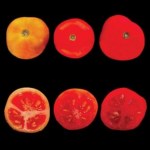Weizmann Institute
Thousands came to the Weizmann Institute yesterday evening for Researchers' Night activities. Researcher's Night is sponsored by the EU, and it takes place all over Israel and across Europe. In addition to lab tours and showings of 3-D films of molecular structures, the Clore Garden Science -- an outdoor science museum on the Weizmann campus -- swarmed with activity. Especially popular were the fire juggler, hands-on educational activities in the EcoSphere, and the telescopes set up especially for the event.
Israel's Minister of Science and Technology gets a lesson in physics
Atop the…
It goes without saying that questions are the basis of scientific research. But all too often, especially in the PR department, we focus on the findings and forget about the process that led to those findings. So it was a refreshing change for us to put out an annual report on the theme of questions.
While the report takes as its premise the "big", even somewhat rhetorical questions, many of the featured scientists relate to the driving questions that keep them in the lab from morning to night.
In his message, Institute President Prof. Daniel Zajfman wrote:
Each new discovery leads to…
The Dot Physics game inspired us to put up this photo from the Institute's new calendar,* which features images of (mostly) old scientific equipment.
In case you haven't guessed, it was called a "tamnun" (Hebrew for octopus) or, more formally, a Multi-Counter Gamma-Ray Goniometer. It was developed (and patented) at the Institute in the 1970s for use in Tandem Accelerator experiments. The multiple movable arms are meant to grip up to six gamma-ray detectors at precisely calculated angles.
Patent notwithstanding, it does not appear to have been a huge seller, and even the old-timers here were…
When you look over the assortment of sizes, shapes and colors of tomatoes displayed in the market, do you stop to consider the time and effort that went into developing them (more than ten years to create a new commercial cultivar)? But a variety of sweet, pink-skinned tomato that's popular in the Far East could speed-up the breeding of new cultivars in this region. In the search for the mutation that gives these tomatoes their pink hue, Weizmann scientists discovered a "master" gene that regulates the levels of hundreds of tomato metabolites. That gene, say the scientists, might be used as a…
Anne Dillard said "You can't test courage cautiously," but Institute scientists have found a way to test it fairly safely, at least.
One might think of courage as an abstract idea, but it turns out that acts of bravery reveal a unique activity pattern in the brain. An experiment at the Institute to identify the brain mechanisms that take control when the call to action conquers fear involved a live snake on a remote-controlled trolley and volunteers with a fear of snakes in an fMRI.
Bats may be using an innate understanding of physics to track their prey in the dark. Institute neurobiologists trained Egyptian fruit bats to fly to food in a dark lab. They found that in some situations the bats sweep their sonar to either side, catching their "prey" on the beam's slope, while at other times they point their beams head-on. Some physical calculations showed that the changes in intensity near the slope help in getting a fix on the target's direction - a very efficient strategy for localizing targets - while the direct beam is preferable for discerning a hard-to-identify…
Based on some of the (many) comments spurred by the appearance of PepsiCo on ScienceBlogs, we want to clarify Brookhaven's involvement on this site.
In April, Brookhaven was invited by ScienceBlogs editors to join the community as an institutional blogger, along with the Weizmann Institute of Science and the SETI Institute (and later, CERN and the Howard Hughes Medical Institute).
There's no money being exchanged between Brookhaven and ScienceBlogs.
Of course, we see this as a good public relations opportunity. But that doesn't mean that this space will only be used to redistribute press…
In the three years since he joined the Weizmann Institute, there have been four press releases on Dr. Avishay Gal-Yam's work as well a number of stories in our magazines. This may be somewhat unusual, but there is no denying the interest in his subject matter: supernovae.
Of the last two papers featured in the media, the first has all the pyrotechnical drama: a star the size of 200 suns, exotic electron-positron pairs sucking out its energy until it collapses on its own core and goes up in a mega thermonuclear explosion.
The second paper also describes a new type of supernova - one that's…
According to the yearly survey in The Scientist, the Weizmann Institute is the second best place to work in international academia. Over the past few years, the Institute has twice taken the number one slot; this is the third time it has been rated number two. Congratulations to the University of Queensland, Brisbane, Australia, which ranked first this year, and to the Hebrew University of Jerusalem, which also made the top ten.
Professor Daniel Zajfman, president of the Weizmann Institute of Science, is a physicist in the fields of atomic and molecular physics. He has a strong interest in the popularization of science
George Mallory, the man who almost made it to the top of Everest, is probably most famous for his terse reply when asked why he attempted to climb it: "Because it's there." Scientists often resemble mountain climbers: We want to understand nature because it's there. Why, in today's world, should we be devoting precious resources to finding out what happened in the Universe's first billionth of a…

